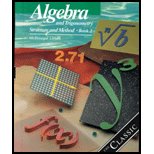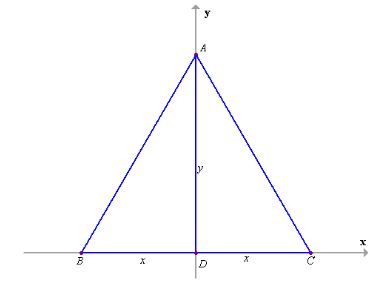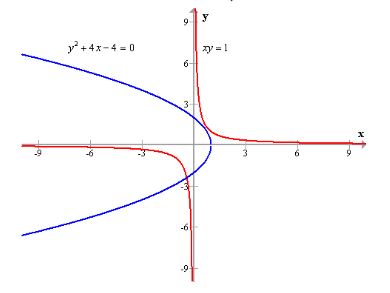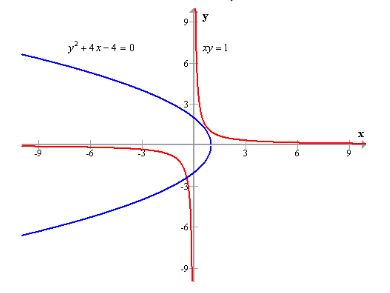
(a)
To write: equations for area and perimeter.
(a)
Answer to Problem 20WE
Equations for area and perimeter are
Explanation of Solution
Given:
No isosceles
Calculation:
Show that no isosceles triangle has perimeter 4 and area 1.
The figure of an isosceles triangle is as follows:

Write the equations for area and perimeter.
Given that
The area of a triangle is
Since Base
Reversing the left and right sides,
The perimeter of a triangle is the summation of the three sides of that triangle.
For the given triangle the perimeter is
Again the given triangle is isosceles. Hence,
Therefore the equation for the perimeter of the given triangle is,
Perimeter =
Reversing the left and right sides,
Again from the triangle, it is found that
From equation (1),
Conclusion:
Equations for area and perimeter are
(b)
To simplify: the perimeter equation
(b)
Answer to Problem 20WE
The required result is
Explanation of Solution
Calculation:
Simplify the perimeter equation.
From equation (2) the perimeter equation is,
By squaring both sides of the equation,
Conclusion:
Therefore, the required result is
(c)
To graph: the system and explain the conclusion.
(c)
Answer to Problem 20WE
 There are no solutions for this value of
There are no solutions for this value of
Explanation of Solution
Calculation:
The graph for the two solutions

From the graph, it is found that the graph of the two equations is intersecting at one point in the third quadrant. In third quadrant the value of both
Thus, it is concluded that for an isosceles triangle with perimeter 4 and area 1 there is no solution.
Conclusion:
There are no solutions for this value of
Chapter 9 Solutions
Algebra and Trigonometry: Structure and Method, Book 2
Additional Math Textbook Solutions
Thinking Mathematically (6th Edition)
Calculus: Early Transcendentals (2nd Edition)
Elementary Statistics
A Problem Solving Approach To Mathematics For Elementary School Teachers (13th Edition)
College Algebra (7th Edition)
Elementary Statistics (13th Edition)
- In simplest terms, Sketch the graph of the parabola. Then, determine its equation. opens downward, vertex is (- 4, 7), passes through point (0, - 39)arrow_forwardIn simplest way, For each quadratic relation, find the zeros and the maximum or minimum. a) y = x 2 + 16 x + 39 b) y = 5 x2 - 50 x - 120arrow_forwardIn simplest terms and step by step Write each quadratic relation in standard form, then fi nd the zeros. y = - 4( x + 6)2 + 36arrow_forward
- In simplest terms and step by step For each quadratic relation, find the zeros and the maximum or minimum. 1) y = - 2 x2 - 28 x + 64 2) y = 6 x2 + 36 x - 42arrow_forwardWrite each relation in standard form a)y = 5(x + 10)2 + 7 b)y = 9(x - 8)2 - 4arrow_forwardIn simplest form and step by step Write the quadratic relation in standard form, then fi nd the zeros. y = 3(x - 1)2 - 147arrow_forward
- Step by step instructions The path of a soccer ball can be modelled by the relation h = - 0.1 d 2 + 0.5 d + 0.6, where h is the ball’s height and d is the horizontal distance from the kicker. a) Find the zeros of the relation.arrow_forwardIn simplest terms and step by step how do you find the zeros of y = 6x2 + 24x - 192arrow_forwardStep by step Find the zeros of each quadratic relation. a) y = x2 - 16xarrow_forward
- In simplest step by step terms, how do you find the zeros of y = x2 - 16arrow_forwardIn simplest terms, Describe the shape and position of the parabola relative to the graph of y = x 2 y = - 80( x + 9) 2 + 10.8arrow_forwardas a Identify each equation Parabola, circle, ellipse perbola without completio the square. x²-6x-14 y = 33-y² 14y ofarrow_forward
 Algebra and Trigonometry (6th Edition)AlgebraISBN:9780134463216Author:Robert F. BlitzerPublisher:PEARSON
Algebra and Trigonometry (6th Edition)AlgebraISBN:9780134463216Author:Robert F. BlitzerPublisher:PEARSON Contemporary Abstract AlgebraAlgebraISBN:9781305657960Author:Joseph GallianPublisher:Cengage Learning
Contemporary Abstract AlgebraAlgebraISBN:9781305657960Author:Joseph GallianPublisher:Cengage Learning Linear Algebra: A Modern IntroductionAlgebraISBN:9781285463247Author:David PoolePublisher:Cengage Learning
Linear Algebra: A Modern IntroductionAlgebraISBN:9781285463247Author:David PoolePublisher:Cengage Learning Algebra And Trigonometry (11th Edition)AlgebraISBN:9780135163078Author:Michael SullivanPublisher:PEARSON
Algebra And Trigonometry (11th Edition)AlgebraISBN:9780135163078Author:Michael SullivanPublisher:PEARSON Introduction to Linear Algebra, Fifth EditionAlgebraISBN:9780980232776Author:Gilbert StrangPublisher:Wellesley-Cambridge Press
Introduction to Linear Algebra, Fifth EditionAlgebraISBN:9780980232776Author:Gilbert StrangPublisher:Wellesley-Cambridge Press College Algebra (Collegiate Math)AlgebraISBN:9780077836344Author:Julie Miller, Donna GerkenPublisher:McGraw-Hill Education
College Algebra (Collegiate Math)AlgebraISBN:9780077836344Author:Julie Miller, Donna GerkenPublisher:McGraw-Hill Education





